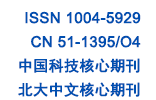WANG Jinhu, CAI Jiahan, XIE Binze, WANG Yuhao, CHEN Jiang, ZHU Jie
 Abstract
Abstract (
)
 Download PDF
Download PDF (
)
 Knowledge map
Knowledge map
 Save
Save
Based on Mie scattering, the scattering characteristics of charged particles are studied, the relationship between scattering coefficient and surface conductivity is given, the scattering angles of charged particles and non-charged particles with different surfaces are calculated, and the results show that the charged scattering has little influence on metallic particles. However, when the surface charge makes the surface conductivity reach a certain order, the scattering characteristics of dielectric particles such as water sphere and ice hockey particles are obviously affected. Compared with the water sphere, the scattering coefficient oscillation phenomenon of the ice sphere is similar to the scattering efficiency of the metal spherical particles of the same size when the particle size parameter is larger and the amplitude is stronger, and the scattering efficiency is similar to that of the metal spherical particles of the same size when the face conductivity is very high, that is, when more electric charge is carried. With the increase of surface conductivity, the scattering coefficient changes greatly, but when the conductivity reaches a certain value, the scattering coefficient tends to be constant. Compared with the scattering of non-charged particles, the scattering coefficient of charged particles decreases, the scattering energy is redistributed in different directions, the backscattering intensity is enhanced, and the scattering intensity in other directions decreases. When the surface conductivity of ice hockey particles and water polo particles is large enough, their scattering characteristics are close to that of metal particles of the same size.


